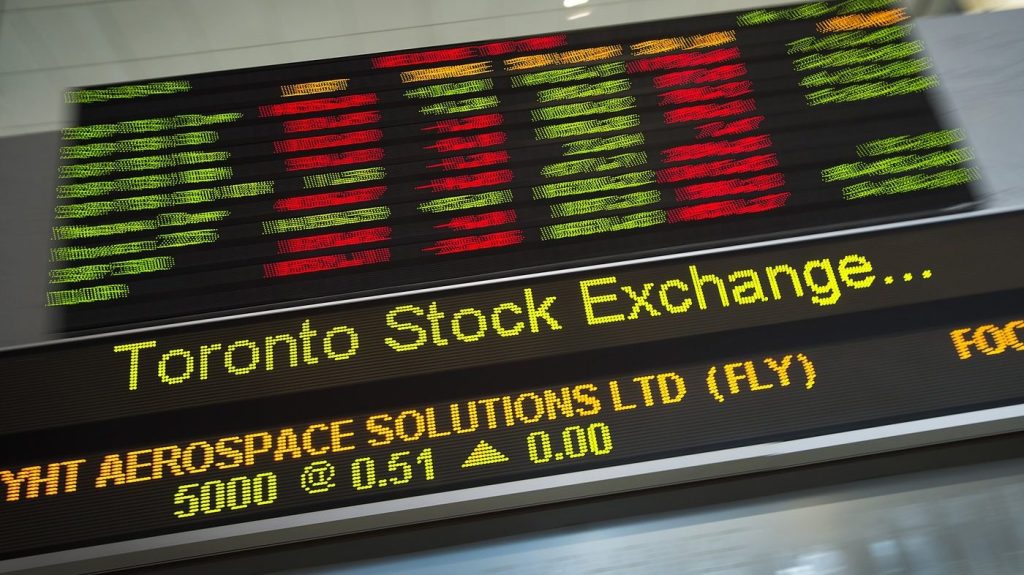North American markets tank as latest tariffs heighten recession fears

Posted April 3, 2025 6:30 am.
Last Updated April 3, 2025 5:39 pm.
Stock markets in Canada and the U.S. shuddered, and a level of shock unseen since COVID’s outbreak tore through financial markets worldwide Thursday on worries about the damage President Donald Trump’s newest set of tariffs could do to economies across continents, including his own.
The S&P 500 sank 4.8 per cent, more than in major markets across Asia and Europe, for its worst day since the pandemic crashed the economy in 2020. The Dow Jones Industrial Average dropped 1,679 points, or 4 per cent, and the Nasdaq composite tumbled 6 per cent.
The S&P/TSX composite index closed down 971.41 points or 3.8 per cent at 24,335.77.
“The tariff news that came out last night, I think was certainly worse than the vast majority of people expected,” said Mike Archibald, vice-president and portfolio manager with AGF Investments Inc.
Markets are trying to re-evaluate the likelihood of a recession as a result, he said.
“Obviously, these tariffs would be very, very negative for global growth if they stay in effect.”
The Canadian dollar traded for 70.98 cents US, according to XE.com, compared with 69.83 cents US on Wednesday.
“The U.S. dollar is selling off against all major currencies,” said Martin Pelletier, senior portfolio manager at Wellington-Altus Private Counsel Inc., leading to strength for the loonie.
The May crude oil contract was down US$4.76 at US$66.95 per barrel and the May natural gas contract was up nine cents US at US$4.14 per mmBTU.
The June gold contract was down US$44.50 at US$3,121.70 an ounce, and the May copper contract was down 21 cents US at US$4.83 a pound.
Major tech stocks led the way down, as companies like Apple stand to be affected by tariffs on countries like China, said Pelletier.
Even gold, which has been hitting highs as investors seek a safe haven, was down.
The fresh round of levies sparked concerns from economists that they could drag the global economy into a recession. Tariffs are widely expected to be inflationary, as are Canada’s retaliatory tariffs. They are also likely to weigh on economic growth.
Trump seems to view this possibility as a short-term pain that will be worth the longer-term shift he’s looking for, said Pelletier.
In stock markets abroad, indexes fell sharply worldwide. France’s CAC 40 dropped 3.3 per cent, and Germany’s DAX lost 3 per cent in Europe.
Japan’s Nikkei 225 sank 2.8 per cent while Hong Kong’s Hang Seng lost 1.5 per cent.
Of course, there’s still plenty of uncertainty for investors, said Pelletier. The latest announcement by Trump came after a couple of months of tariff threats, announcements, exemptions and delays, so it’s possible what was laid out on Wednesday isn’t the final story.
“Having said that, there are some important signals in the market that this is a major structural shift by the U.S. administration,” he said.
“Is the market overreacting to what we saw yesterday? We don’t know, but it certainly is adjusting its expectations more to the downside risks than the upside recovery.”
Archibald thinks we may have reached “peak tariff,” and may be entering a negotiation phase where some could be lifted in the near future.
“The question now is just, do we get some kind of negotiated outcome here that is less negative for broader markets?”








